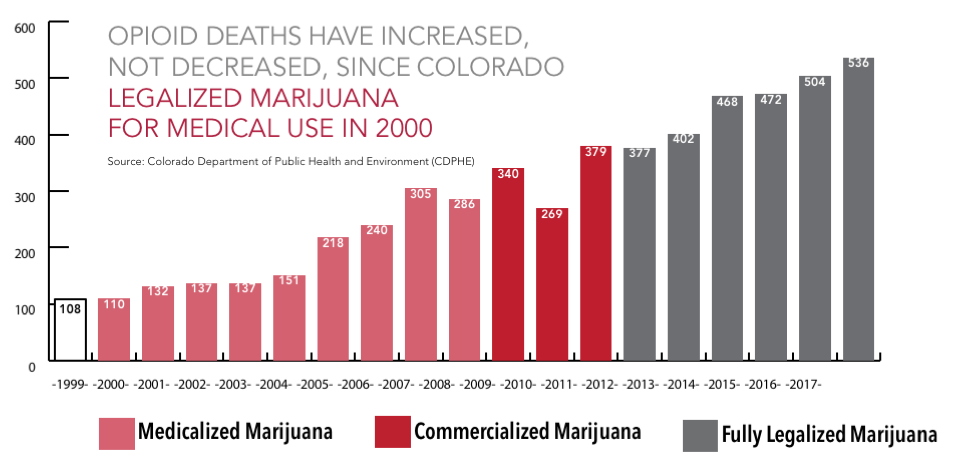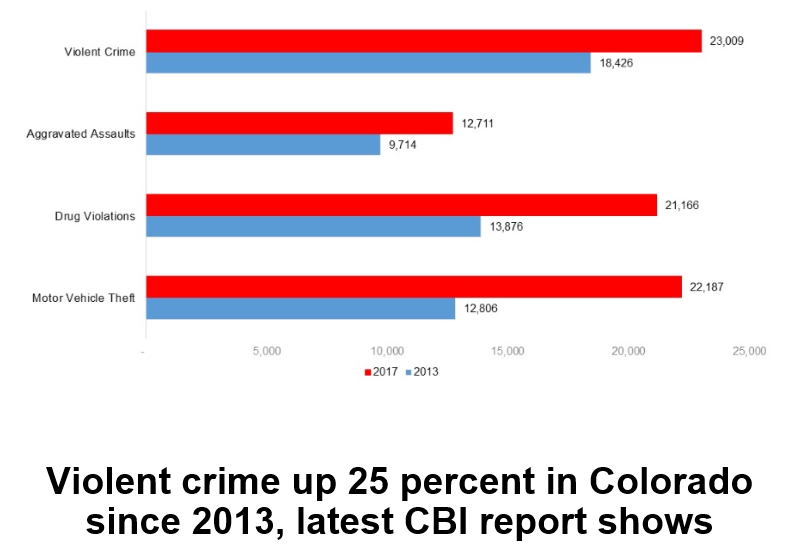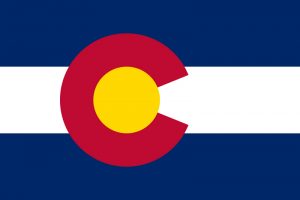 Colorado legalised marijuana in 2012 but has not gotten what proponents promised. Here’s what it’s gotten instead:
Colorado legalised marijuana in 2012 but has not gotten what proponents promised. Here’s what it’s gotten instead:
A 2019 Colorado report compiled by the Rocky Mountain High Intensity Drug Trafficking Area finds marijuana-positive traffic fatalities, hospitalisations, marijuana use, and illegal market activity have exploded since marijuana legalisation.
According to the report,
- overall, past-month marijuana use for ages 12 and older increased 58% and is 78% higher than the national average
- adult use has increased 94% (96% higher than the national average)
- college age marijuana use increased 18% and is 48% higher than the national average
- youth marijuana use decreased 14% but is still 40% higher than the national average. First time use in Colorado ranks highest in the USA for 12-17 and 18-25 age groups. There is also a concerning increase in the use of high-THC dabbing and edibles amongst young teenagers
- two out of three local jurisdictions in Colorado have banned medical and recreational marijuana businesses to protect families
- The industry targets kids by selling marijuana consumption devices to avoid detection like vape pens that look like high-lighters and eye-liner.
- Marketers advertise super high potency gummi candies to youth whose developing brains make them more vulnerable to addiction. The vast amount of industry profits come from heavy and addicted users.
Colorado has the highest rate of first-time marijuana use among youth (ages 12-17) and young adults (ages 18-25) (NSDUH State Estimates, 2016-2017).
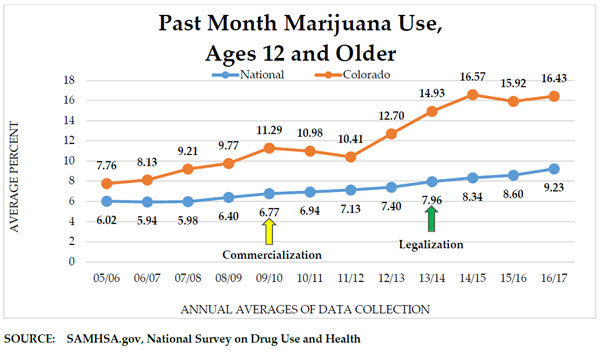
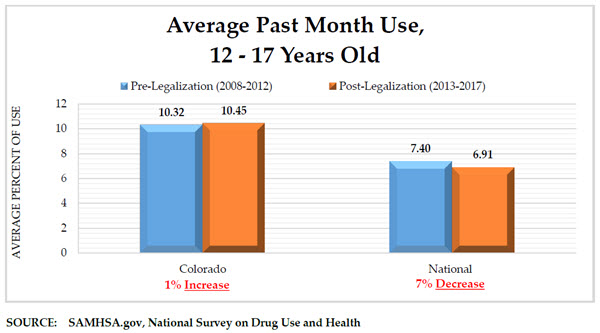
LATEST UPDATE (Aug 2020)
A new survey just released by the state of Colorado has found that marijuana use has increased in the last two years with nearly 21% of young people in the state reporting past month use. Notably, use in young teens (aged 15 and younger) has significantly increased by 15.5% from 2017 (the last time data was collected). According to the data, part of the Healthy Kids Colorado Survey, since 2017, past month marijuana use among those aged 15 or younger has increased 14.8%, 16 or 17-year-olds has increased 3.0%, and 18 or older has increased 1.9%. Overall, marijuana use amongst all age groups has risen 6.2%.
In a disturbing development, teens report an alarming increase in their use of ultra-potent cannabis products in the form of dabs and vapes. More than half of high school students (52%) who use marijuana reported that they dab marijuana to get high – up from 34.4% just two years ago. This is based on surveys of over 53,000 middle and high school students statewide in Colorado last year.
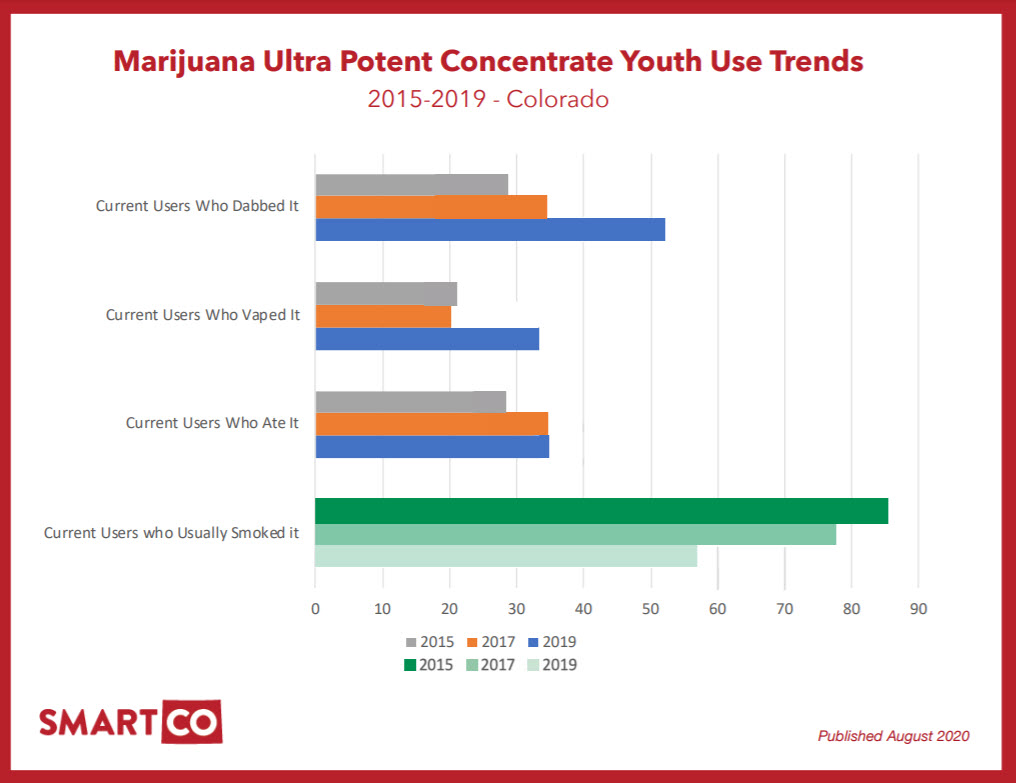 BIG MARIJUANA
BIG MARIJUANA
- As of June 2017, there were 491 retail marijuana stores in the state of Colorado compared to 392 Starbucks and 208 McDonald’s.
MARIJUANA-RELATED TRAFFIC FATALITIES
- The percent of traffic fatalities that involved drivers intoxicated with marijuana in Colorado rose by 86% between 2013 and 2017, with over one-fifth of all traffic fatalities involving a driver testing positive for marijuana by 2017 (National Highway Traffic Safety Administration, 2006-2011; Colorado Department of Transportation, 2012-2017).
- since recreational marijuana was legalised, traffic deaths in which drivers tested positive for marijuana increased 109% while all Colorado traffic deaths increased 31%
- 65% of Coloradan drivers testing positive for marijuana in 2017 combined marijuana with alcohol and/or other illicit drugs (National Highway Traffic Safety Administration, 2006-2011; Colorado Department of Transportation, 2012-2017).
- Research by the Highway Loss Data Institute finds that following legalisation of recreational marijuana in Colorado, Oregon and Washington, collision claims in these three states were significantly higher than in comparable, neighboring, non-legal states (Highway Loss Data Institute, 2018).
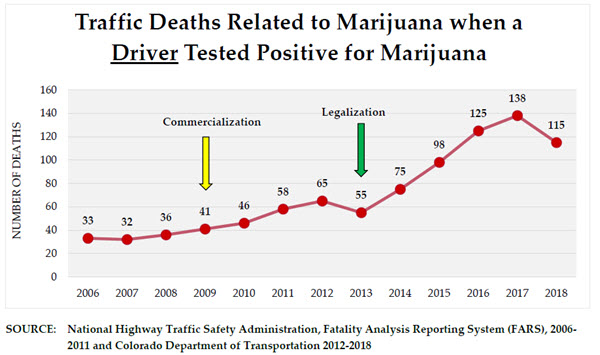
POTENCY
- According to the Marijuana Policy Group, Market Size and Demand for Marijuana in Colorado 2017 Market Update:
“The average THC content of all tested flower in 2017 was 19.6% statewide compared to 17.4% in 2016, 16.6% in 2015 and 16.4% in 2014.”
“The average potency of concentrated extract products increased steadily from 56.6% THC content by weight in 2014 to 68.6% at the end of 2017.”
HEALTH
- the yearly number of emergency department visits related to marijuana increased 54%, and a 101% increase in hospitalisations
- A recent study conducted in Colorado finds that following recreational marijuana commercialisation in 2013, marijuana-detection rates significantly increased among traumatic injury patients in Colorado hospitals (Chung, et al., 2019).
SUICIDE
- 2019 Colorado toxicology reports show the percentage of adolescent suicide victims testing positive for marijuana continues to increase. Between 2011 and 2013, 20.7% of suicide victims between the ages of 10 and 19 tested positive for marijuana (compared with 12.7% who tested positive for alcohol). By 2014-2016, 22.4% tested positive for marijuana (compared with 9.3% for alcohol) (Colorado Department of Public Health and Environment, 2019).
- the percent of suicide incidents in which toxicology results were positive for marijuana has increased from 14% in 2013 to 23% in 2017
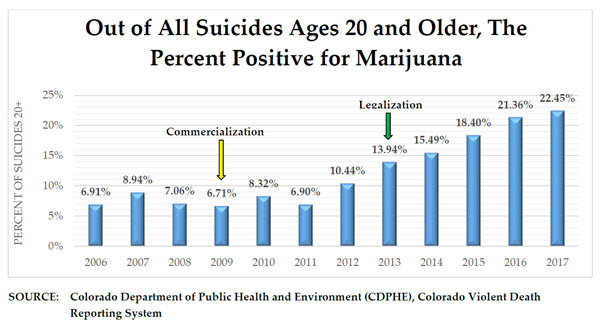
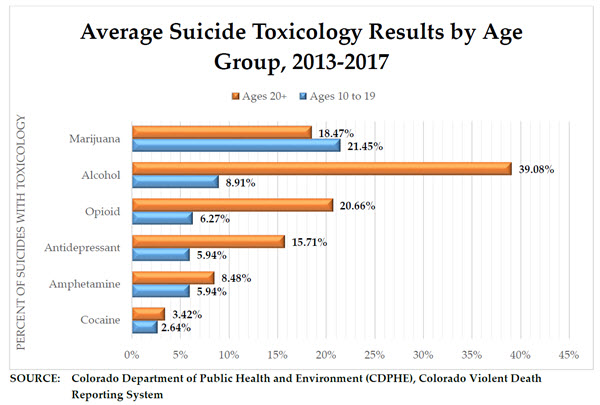 SOCIAL JUSTICE?
SOCIAL JUSTICE?
- The 2017 marijuana-related African American arrest rate in Colorado is nearly twice that of Caucasians (233 in 100,000 versus 118 in 100,000) (Colorado Department of Public Safety (2018) Impacts of Marijuana Legalization in Colorado: A Report Pursuant to Senate Bill 13-283. Division of Criminal Justice.)
- Across Colorado, minority juveniles suffered. The average number of marijuana-related arrests among Hispanic juveniles increased 7.3%, and African American juveniles increased 5.9%
- drug suspension rates in Colorado schools with 76% or more students of colour are over two times higher compared to Colorado schools with fewer than 25% students of colour.
Even pro-drug advocacy groups admit that legalisation is failing with its promise of social justice. The Drug Policy Alliance found the number of black juveniles arrested on marijuana charges grew after legalization in Colorado. In 2016, a Colorado Department of Public Safety analysis found that black people living in that state remained three times more likely than white people to be arrested for selling or possessing marijuana.
CRIME
- Violent crime increased 18.6% and property crime increased 8.3% in Colorado since 2013. 65% of local jurisdictions in Colorado have banned medical and recreational marijuana businesses.
ENVIRONMENTAL DAMAGE
- An indoor marijuana grow consumes 17 times more power than an average residence.
- A mature cannabis plant can consume upwards of 22.7 liters of water per-day during the growing season
CONTAMINATED PRODUCTS
- Colorado has issued more than 40 recalls of plants laced with pesticides and mold.
BURGEONING BLACK MARKET
- Rather than being eliminated, the state’s black market has exploded. Colorado has become a source state for international drug trafficking and money laundering operations from Cuba, China, Mexico, and elsewhere. RMHIDTA Colorado Task Forces (10) conducted 144 investigations of black-market marijuana in Colorado.
- Last year, the regulated industry produced 6.4 metric tons of unaccounted-for marijuana. More than 80,000 black-market plants were found on Colorado’s federal lands.
Colorado legalised marijuana commercialisation for medical use in 2009 followed by recreational use three years later. Like Colorado, the other seven states that fully legalized marijuana commercialised the drug for medical use first.
Don’t let New Zealand follow Colorado.
It’s high time we took a breath from marijuana commercialisation
“Colorado’s youth use marijuana at a rate 85% higher than the national average. Now marijuana-related traffic fatalities are up by 151%. Now 70% of 400 licensed pot shops surveyed recommend that pregnant women use marijuana to treat morning sickness. Now an indoor marijuana grow consumes 17x more power per square foot than an average residence. Now each of the approximately 1m adult marijuana plants grown by licensed growers in Colorado consumes over 2.2 liters of water – per day. Now Colorado has issued over 40 little-publicized recalls of retail marijuana laced with pesticides and mold. And now Colorado has a booming black market… We should pause and catch our breath before racing off again at the industry’s urging. Let’s call it “just say know.” Let’s educate ourselves about the impacts of commercialization. Let’s reclaim our right as citizens to have a say in Colorado’s health, safety, and environment. Unfettered commercialization is not inevitable. You have a say.
U.S. Attorney for District of Colorado Bob Troyer’s September 2018 op-ed here.


